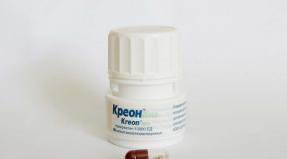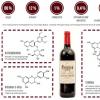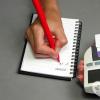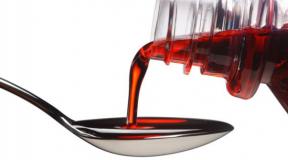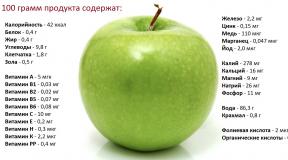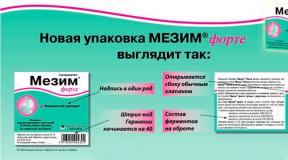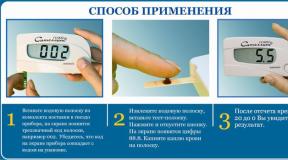What does low blood sugar mean
Hypoglycemia, or low blood sugar, is just as dangerous as high glucose levels. With critical indicators, a coma occurs and a fatal outcome is possible. Most often, this condition is, but it can be observed in a mild form in a healthy person.
Causes
In most cases, low blood sugar occurs in people with diabetes. Why is it falling? The reasons may be as follows:
- a diet high in simple carbohydrates;
- taking certain antidiabetic drugs (older generation drugs most often lead to hypoglycemia);
- alcohol intake without food;
- taking certain drugs or alcohol at the same time as antidiabetic medicines
- skipping the next meal or its delay;
- giving too much insulin
People who do not have diabetes can suffer from low sugar, although this happens quite rarely. The reasons are different, among them:
- a large amount of alcohol drunk;
- taking certain medications;
- diseases of the liver, kidneys, adrenal glands, pancreas;
- metabolic disease;
- great physical activity;
- strict diets, especially those low in carbohydrates;
- long breaks between meals (from 8 hours);
- decrease in sugar in the morning after a night's sleep due to prolonged lack of nutrition;
- a large amount of sweets in the diet.
signs
With low blood sugar, well-being varies, depending on the level to which the decrease occurred. The appearance of symptoms also depends on the rate of sugar reduction. Symptoms of hypoglycemia may appear if the drop in glucose has occurred sharply, but at the same time its level has remained normal.
Slight decline
The glucose level drops to 3.8 mmol / l and below. In this case, the symptoms may be absent or may be the following:
- weakness, trembling all over the body, chills;
- increased sweating, cold clammy sweat, usually the head sweats, especially the back of the neck;
- dizziness;
- hunger;
- nausea;
- nervousness, restlessness, anxiety;
- palpitations (tachycardia);
- tingling or numbness of the lips and fingers;
- blurred vision.
To feel better and the symptoms disappear, it is enough to eat something sweet.
Average decline
The glucose level drops below 3 mmol/l. If there is a decrease in blood sugar of moderate severity, the following symptoms appear:
- irritability, anger;
- confusion, inability to concentrate;
- disorientation in space;
- muscle cramps;
- slow and slurred speech;
- instability, unsteady gait, impaired coordination of movements;
- drowsiness;
- fatigue and weakness;
- cry.
severe hypoglycemia
If the glucose level drops to 1.9 mmol / l, the consequences may be as follows:
- convulsions;
- coma;
- stroke;
- low body temperature;
- death.
Prolonged and significant reduction in sugar can lead to irreversible changes in the brain and cardiovascular disease. There may be no symptoms of hypoglycemia if the person is taking certain medications, which include beta-blockers.
When blood sugar is low, a person experiences weakness, fatigue, drowsiness
A drop in sugar levels can happen in a dream. As a rule, a person wakes up in the morning with a headache. Signs of nocturnal hypoglycemia are as follows:
- severe sweating;
- falling out of bed;
- sleepwalking;
- restless behavior;
- nightmares;
- unusual noises made by a person.
All of the above symptoms in different people can appear at different levels of glucose in the blood. Such manifestations are possible with normal sugar, if there was a sharp drop. With persistent hypoglycemia in people with type I and type II diabetes, symptoms may appear at 6-8 mmol / liter. The longer the course of diabetes, the less the body's ability to sense hypoglycemia in the initial stage.
Children are less sensitive to low blood sugar. When falling to 3.6-2.2 mmol / liter, any manifestations in the child may be absent, and appear only when it decreases to 2.6-2.2 mmol / liter. Adults begin to feel changes in well-being, usually at 3.8 mmol / liter.
Diagnostics
The diagnosis of hypoglycemia is made if the analysis showed low blood sugar levels, and there are symptoms that disappear after eating a sweet food or drink.
In addition, the doctor conducts a physical examination, asks about the state of health, lifestyle, medication, changes in body weight.
Treatment
With a slight drop in sugar, a person can cope on his own: take a glucose solution, eat a piece of sugar, a spoonful of honey, candy (caramel), drink sweet juice, and so on. It is not recommended to eat a sandwich with sausage or butter: firstly, the loaf is not quite suitable, and secondly, fat will slow down the absorption of glucose from the loaf. Also, you should not eat cakes, chocolate, ice cream, pasta, cereals, fruits.
With a severe decrease in glucose, a person may lose consciousness. In this case, you need to call an ambulance. Usually, the patient is slowly injected with a glucose solution intravenously or glucagon, which can be administered not only into a vein, but also intramuscularly or subcutaneously. Half an hour later, determine the level of glucose in the blood.
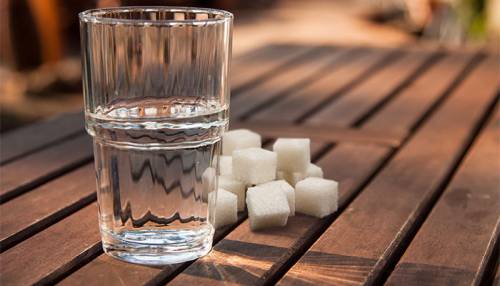
With mild hypoglycemia, you can improve your well-being by eating a piece of sugar
In severe cases, hospitalization is possible. Treatment depends on the causes of hypoglycemia: an overdose of insulin or a hypoglycemic drug, kidney failure, liver disease, sepsis, etc. Depending on the cause of the drop in sugar, determine how long the glucose infusion will last. The speed of administration is also important. It should be such that the sugar level is at the level of 5-10 mmol / liter.
Treatment of hypoglycemia in diabetes
Treatment of hypoglycemia in diabetic patients is as follows:
- If sugar drops after eating simple carbohydrates, it is recommended to change the diet.
- It is recommended to eat in small portions, but often.
- Eat some complex carbohydrate or protein food before bed.
- Ask your doctor to change the dose of insulin if the drop in glucose is associated with taking it.
Prevention of hypoglycemia in diabetes
To prevent low blood sugar in diabetes, you must adhere to the following rules:
- Follow the diet recommended by the doctor.
- Breaks between meals - no more than 4 hours.
- Continuous control of blood sugar.
- Dose control of hypoglycemic drug or insulin.
- Knowledge of the action of drugs.
- Always carry sugary foods with you.
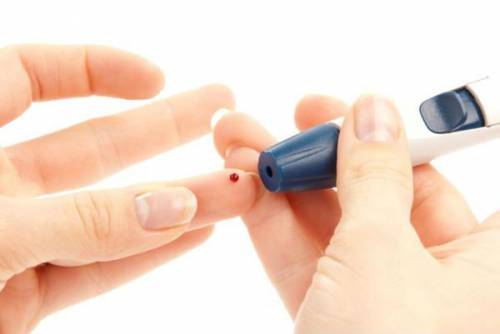
An important preventive measure for hypoglycemia in diabetes mellitus is continuous monitoring of glucose levels.
You should not allow a decrease in blood sugar in the following cases:
- elderly people;
- with diabetic rhinopathy and the risk of retinal hemorrhage;
- with diseases of the heart and blood vessels;
- people who do not have symptoms of low sugar.
A sharp decrease in glucose should be avoided, especially for people with diabetes that has not been compensated for a long time. In this case, sugar is constantly growing, and if it is reduced quickly, even to 6 mmol / liter, symptoms characteristic of hypoglycemia may appear.
Treatment of hypoglycemia without diabetes
First you need to analyze the lifestyle and health status, try to determine what could cause low sugar. It is best to contact a doctor who can conduct an examination for this. It is possible that diseases that caused hypoglycemia will be identified.
With a drop in blood sugar and the appearance of characteristic symptoms, you need to eat cookies, candy, sweet dried fruits, drink fruit juice, milk or a glucose tablet.
Finally
If you do not pay attention to mild and moderate hypoglycemia, it can turn into severe, in which there is a loss of consciousness. Treatment must begin immediately. A drop in glucose levels to low values \u200b\u200bis no less life-threatening than high sugar. Hypoglycemia can lead to coma and death, so it's important to control your glucose levels. It is necessary to warn acquaintances and colleagues about your illness, and also inform them of what measures they could take as first aid.


